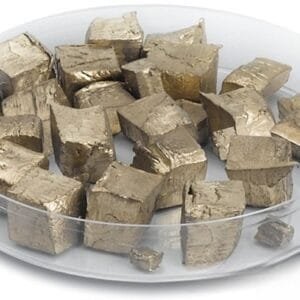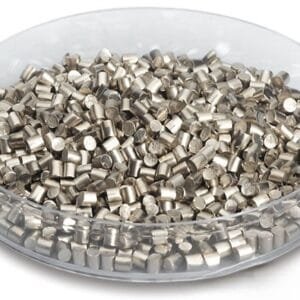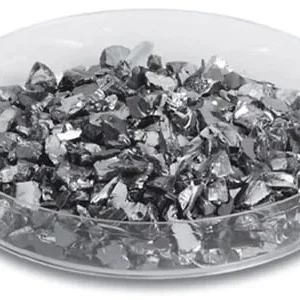Tungsten Evaporation Materials Description
Tungsten is a rare metal that is primarily found in nature as part of chemical compounds rather than in its pure form. It was recognized as a new element in 1781 and first isolated as a metal in 1783. Key ores of tungsten include wolframite and scheelite. During the evaporation process, tungsten can form alloys with materials such as aluminum (Al) or gold (Au).
High-purity tungsten evaporation materials are essential for ensuring high-quality film deposition. TFM specializes in producing tungsten evaporation materials with up to 99.95% purity, employing stringent quality assurance practices to ensure product reliability.

Tungsten Evaporation Materials Specification
| Material Type | Tungsten |
| Symbol | W |
| Color/Appearance | Grayish White, Lustrous, Metallic |
| Melting Point | 3410°C |
| Density | 19.3 g/cm3 |
| Thermal Conductivity | 174 W/m.K |
| Melting Point | 3,410 °C |
| Synonyms | Tungsten Pellets, Tungsten Pieces, Tungsten Evaporation Pellet, W Pellets, W Pieces, W Evaporation Pellet |
Tungsten Evaporation Materials Applications
- Deposition Processes: Used in semiconductor deposition, chemical vapor deposition (CVD), and physical vapor deposition (PVD).
- Optics: Applied in wear protection, decorative coatings, and displays.
Tungsten Evaporation Materials Packaging
Our tungsten evaporation materials are carefully handled to prevent damage during storage and transportation, ensuring they retain their original quality.
Contact Us
TFM offers tungsten evaporation materials in various forms, purities, sizes, and price ranges. We are dedicated to producing high-purity e-beam evaporation materials with the highest possible density and smallest average grain sizes. For current pricing on evaporation pellets and other deposition materials not listed, please contact us with your inquiry.

 MSDS File
MSDS File



Reviews
There are no reviews yet.